Java基礎—ArrayList原始碼淺析
注:以下原始碼均為JDK8的原始碼
一、 核心屬性
基本屬性如下:
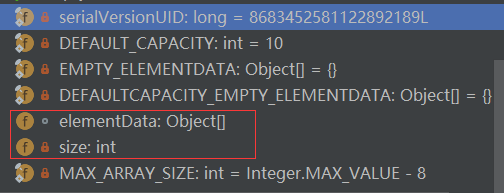
核心的屬性其實是紅框中的兩個:
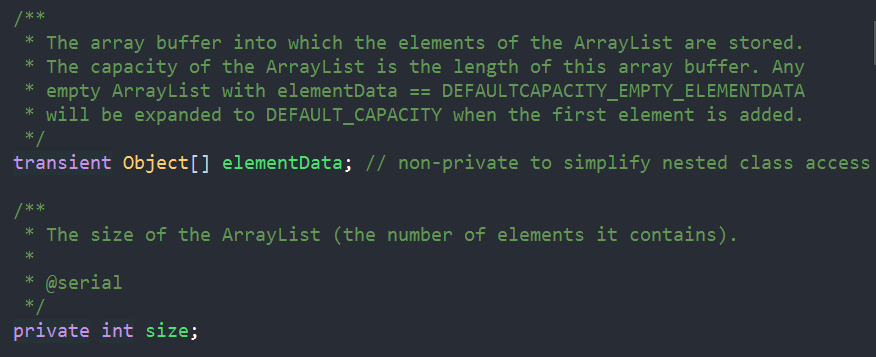
//從註釋也容易看出,一個是集合元素,一個是集合長度(注意是邏輯長度,即元素的個數,而非陣列長度)
其中:transient指明序列化時請忽略。
二、構造器
一共有3個構造器:

1.構造指定容量的ArrayList

2.預設構造器

//可以看到,預設初始容量為10(基本屬性中的DEFAULT_CAPACITY)
而 DEFAULTCAPACITY_EMPTY_ELEMENTDATA
如果建立ArrayList時用的是無參構造器,則第一次插入時會進行一次擴容並且擴到預設陣列大小10
3.使用collection引數的構造器

//接收一個集合進行構造,按照迭代器返回的順序排列
更多容器初始化的介紹,參考是清淺池塘知乎專欄:https://zhuanlan.zhihu.com/p/27873515
三、新增元素
一共有5個(包含2個過載方法)
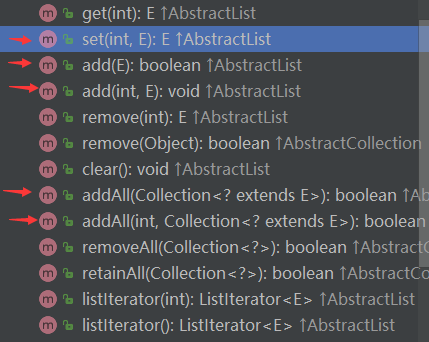
//由於是基於陣列進行實現的,我們只要抓住它的特點,就能讀懂總體的思路
1.set(int,E

//比較容易讀懂的一個方法:檢查下標->取得舊元素->替代->返回新元素
2.add(E)/add(int,E),包含兩個過載方法:在末尾新增元素與在指定位置新增元素
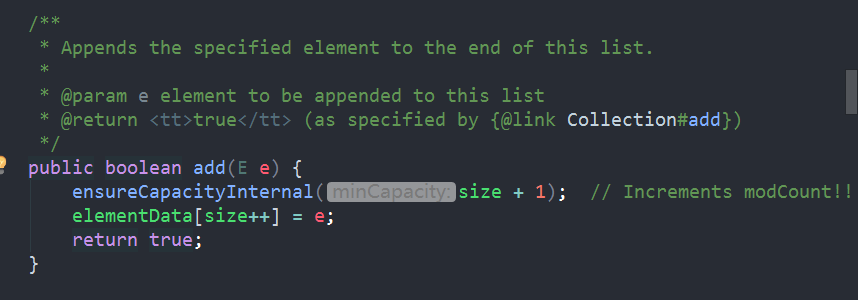
//先檢查容量是否需要擴容(擴容演算法不在這裡展開),再在結尾新增元素(size+1)
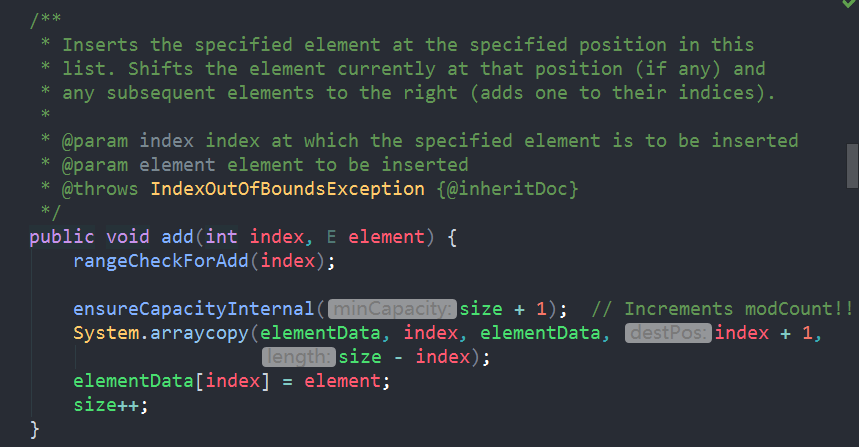
//同樣的,涉及下標的都先檢查下標,之後檢查是否需要擴容,之後,由於是陣列,先右移Index+1的元素,再新增
3.addAll(),兩個addAll方法,與上面類似,一個為在末尾新增,一個在指定位置新增,順序均為迭代器返回的順序,這裡就不展開:
/** * Appends all of the elements in the specified collection to the end of * this list, in the order that they are returned by the * specified collection's Iterator. The behavior of this operation is * undefined if the specified collection is modified while the operation * is in progress. (This implies that the behavior of this call is * undefined if the specified collection is this list, and this * list is nonempty.) * * @param c collection containing elements to be added to this list * @return <tt>true</tt> if this list changed as a result of the call * @throws NullPointerException if the specified collection is null */ public boolean addAll(Collection<? extends E> c) { Object[] a = c.toArray(); int numNew = a.length; ensureCapacityInternal(size + numNew); // Increments modCount System.arraycopy(a, 0, elementData, size, numNew); size += numNew; return numNew != 0; } /** * Inserts all of the elements in the specified collection into this * list, starting at the specified position. Shifts the element * currently at that position (if any) and any subsequent elements to * the right (increases their indices). The new elements will appear * in the list in the order that they are returned by the * specified collection's iterator. * * @param index index at which to insert the first element from the * specified collection * @param c collection containing elements to be added to this list * @return <tt>true</tt> if this list changed as a result of the call * @throws IndexOutOfBoundsException {@inheritDoc} * @throws NullPointerException if the specified collection is null */ public boolean addAll(int index, Collection<? extends E> c) { rangeCheckForAdd(index); Object[] a = c.toArray(); int numNew = a.length; ensureCapacityInternal(size + numNew); // Increments modCount int numMoved = size - index; if (numMoved > 0) System.arraycopy(elementData, index, elementData, index + numNew, numMoved); System.arraycopy(a, 0, elementData, index, numNew); size += numNew; return numNew != 0; }
四、獲取元素
一個我們常見的get方法:
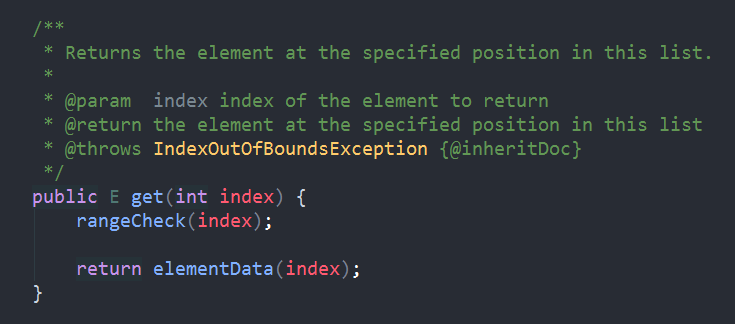
//比較簡單的下標檢查,獲取元素
五、刪除元素
3個基本的刪除方法:

1.remove(int)/remove(Object),兩個過載方法,分別是按照下標和按照元素刪除:

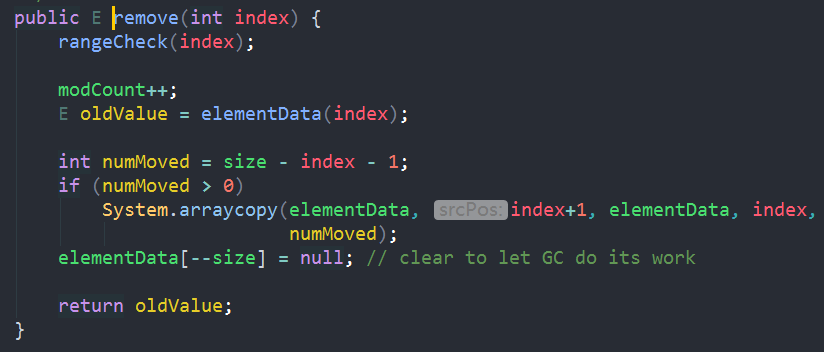
//範圍檢查->修改次數modCount加1->得到將要刪除的元素,被刪除元素後的元素向前進一位,末尾元素置空。
關於modCount:
ArrayList也採用了快速失敗的機制,通過記錄modCount引數來實現。在面對併發的修改時,迭代器很快就會完全失敗,而不是冒著在將來某個不確定時間發生任意不確定行為的風險。
在使用迭代器遍歷的時候,如果使用ArrayList中的remove(int index) remove(Object o) remove(int fromIndex ,int toIndex) add等方法的時候都會修改modCount,在迭代的時候需要保持單執行緒的唯一操作,如果期間進行了插入或者刪除,就會被迭代器檢查獲知,從而出現執行時異常


//先檢查要刪除的元素在不在,存在則刪除返回true,不存在返回false
2.removeRange(int,int),按照範圍刪除,實際是將elementData從toIndex位置開始的元素向前移動到fromIndex,然後將toIndex位置之後的元素全部置空順便修改size。這裡就不展開頻率使用不高的範圍刪除方法了:
/** * Removes from this list all of the elements whose index is between * {@code fromIndex}, inclusive, and {@code toIndex}, exclusive. * Shifts any succeeding elements to the left (reduces their index). * This call shortens the list by {@code (toIndex - fromIndex)} elements. * (If {@code toIndex==fromIndex}, this operation has no effect.) * * @throws IndexOutOfBoundsException if {@code fromIndex} or * {@code toIndex} is out of range * ({@code fromIndex < 0 || * fromIndex >= size() || * toIndex > size() || * toIndex < fromIndex}) */ protected void removeRange(int fromIndex, int toIndex) { modCount++; int numMoved = size - toIndex; System.arraycopy(elementData, toIndex, elementData, fromIndex, numMoved); // clear to let GC do its work int newSize = size - (toIndex-fromIndex); for (int i = newSize; i < size; i++) { elementData[i] = null; } size = newSize; }
清空元素也比較容易看懂:
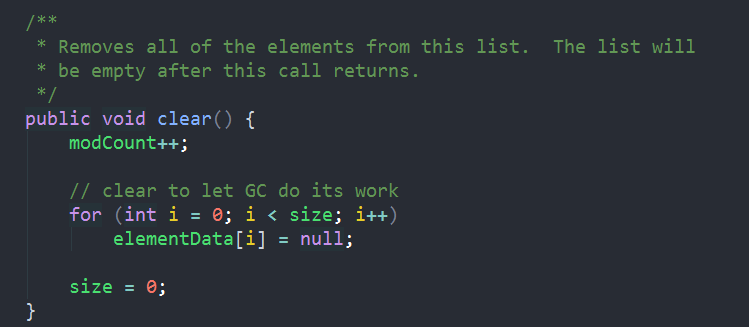
//元素置Null與size置0
在ArrayList中,底層陣列存/取元素效率非常的高(get/set),時間複雜度是O(1),而查詢,插入和刪除元素效率不高,時間複雜度為O(n)。
並且由原始碼也知道,頻繁地插入刪除會導致底層陣列地複製,這個應當由 LinkedList來彌補它地補足了。
